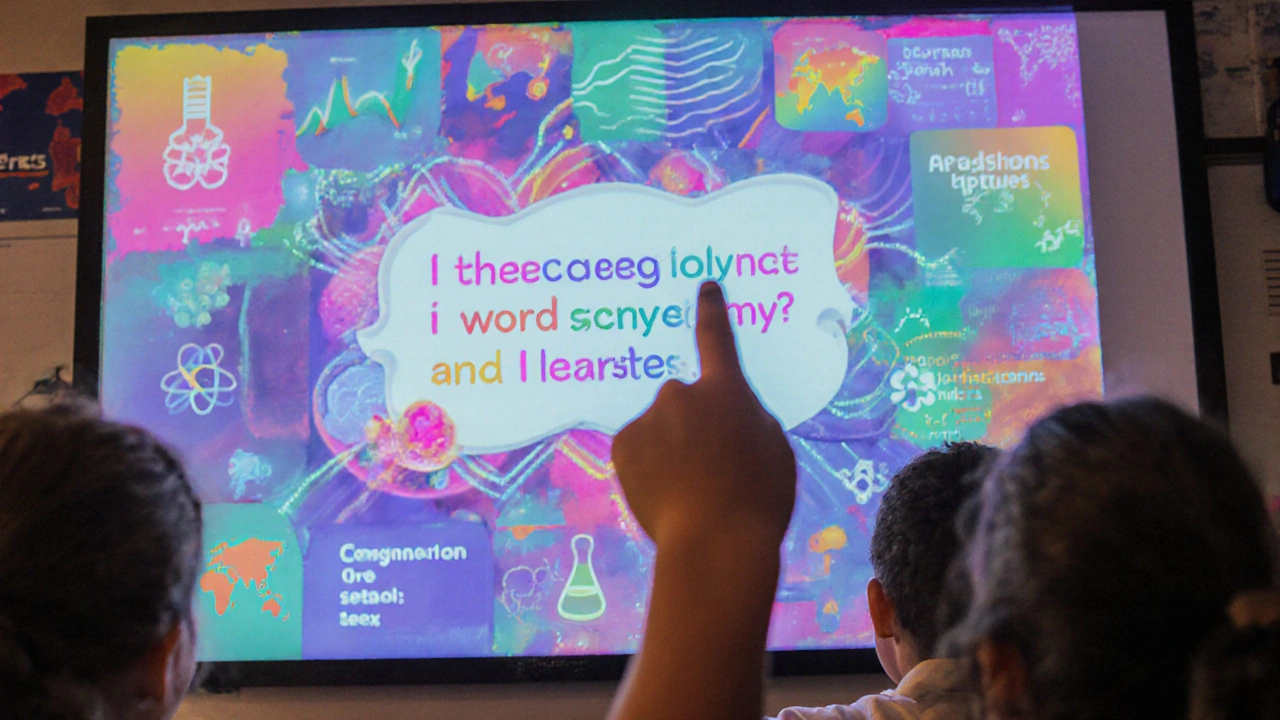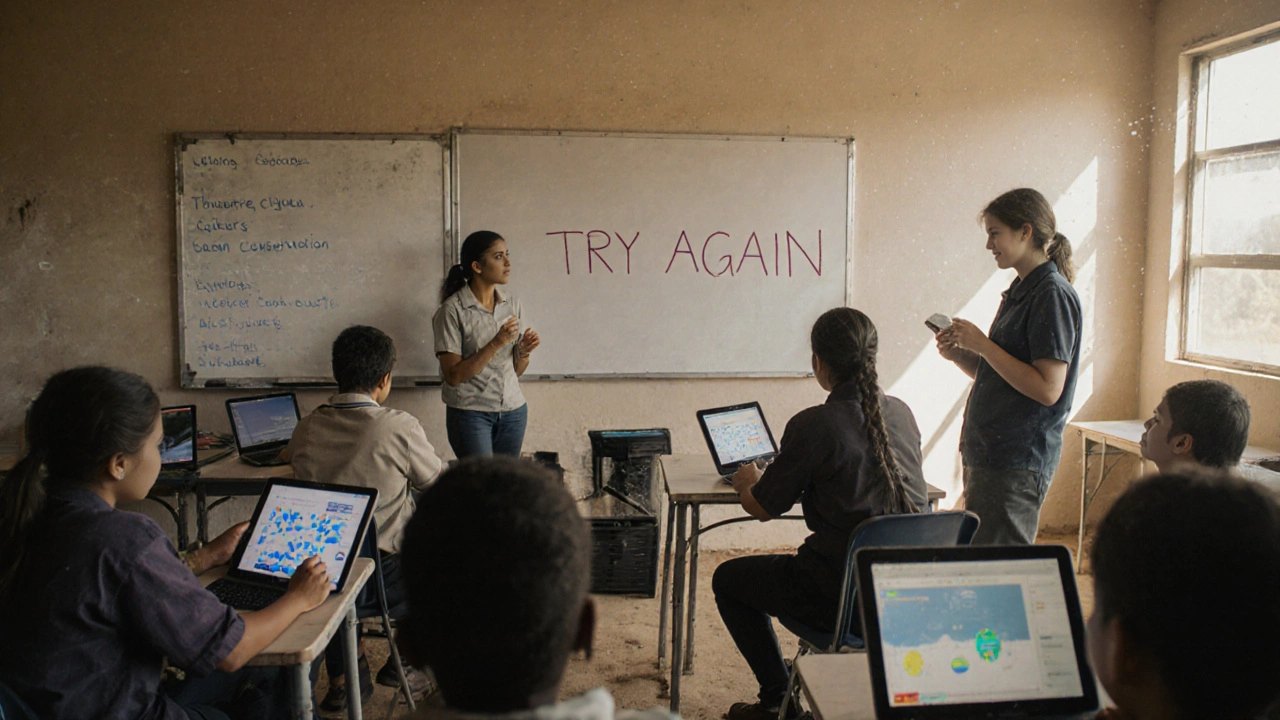Every child today grows up surrounded by screens, apps, and devices they don’t fully understand. They know how to swipe, tap, and scroll-but not how those things work. That’s like being able to drive a car without knowing how the engine turns fuel into motion. It’s not enough anymore to just use technology. Kids need to understand it. And that starts with coding skills in school.
Coding Isn’t Just for Future Programmers
When people hear "coding," they picture someone typing lines of Python in a dark room. But real-world coding is more like learning to write clearly, solve puzzles, or build with LEGO blocks. It’s about breaking big problems into small steps, spotting patterns, and testing ideas until they work. These aren’t just tech skills-they’re life skills.
Take a student writing a science report. They need to organize data, spot trends, and explain results. Coding teaches them how to structure information logically. A student designing a poster for history class learns how to plan layout, sequence elements, and troubleshoot formatting issues-just like debugging code. These aren’t abstract ideas. They’re the same mental muscles used in coding, whether you’re writing a program or planning a project.
Companies aren’t just hiring coders. They’re hiring people who can think computationally. A nurse using a digital patient system needs to understand how data flows. A farmer using GPS tools to optimize crop yields needs to interpret algorithms. Even a baker using automated ovens relies on programmed settings. Coding literacy isn’t about becoming a software engineer. It’s about being able to interact with the world as it’s built today.
Computational Thinking Is the New Literacy
Twenty years ago, schools taught typing because keyboards became common. Ten years ago, digital citizenship became part of the curriculum because kids were online all the time. Now, we’re at the next step: computational thinking. This isn’t about memorizing syntax. It’s about learning how to ask the right questions.
When a child learns to code, they learn to say: "What’s the input? What’s the output? What happens if this changes?" That’s the same thinking used in math, science, even literature. In a story, characters make choices that lead to consequences. In code, every line creates a cause-and-effect chain. The difference is, with coding, students see the results immediately. They fix a mistake, and the animation runs. They adjust a loop, and the numbers change. That instant feedback builds confidence and curiosity.
Studies from MIT and Stanford show that students who learn coding early perform better in math and reading-not because they’re practicing equations or grammar, but because they’re learning persistence, precision, and pattern recognition. One 2023 study tracked 1,200 Australian primary students over three years. Those who had weekly coding activities scored 18% higher on problem-solving tasks than peers who didn’t. The gap widened over time.
It Levels the Playing Field
Not every child has access to expensive tutors, robotics kits, or home computers. But every school has a whiteboard, a projector, and a few tablets. Coding tools like Scratch, Blockly, and Python for Kids are free, visual, and easy to start with. They don’t need high-end hardware. They don’t need prior experience. Just curiosity.
When coding is part of the core curriculum, it stops being a luxury for the privileged. A girl in a rural town, a boy with dyslexia, a student learning English as a second language-they all get the same starting point. Coding doesn’t care about your accent, your background, or your test scores. It cares about your logic. Your effort. Your willingness to try again.
At a public school in Geraldton, Western Australia, teachers introduced a 20-minute weekly coding session using simple drag-and-drop blocks. Within six months, students who struggled with traditional reading assignments were leading group projects. One student, who rarely spoke in class, built a game about ocean conservation-and presented it to the whole school. That’s not magic. That’s empowerment.

Teachers Don’t Need to Be Experts
Some schools avoid coding because they think teachers need to be programmers first. That’s a myth. You don’t need to know JavaScript to teach a kid how to make a sprite move across the screen. You just need to be willing to learn alongside them.
Most free platforms have built-in lesson plans, video tutorials, and community forums. Teachers spend one afternoon getting familiar with the tool, then guide students through challenges like "Make the character jump when you press space" or "Count how many times the ball bounces." The teacher becomes a facilitator-not a lecturer. And students become the experts when they help each other fix bugs.
In Perth, a Year 5 teacher started coding with her class using Google’s CS First program. She’d never written a line of code. Within three months, her students were creating interactive stories. One child even taught her how to add sound effects. That’s the power of peer learning. It flips the classroom. And it works.
What Happens When Coding Is Missing?
Imagine a classroom where every subject uses technology-but no one teaches how it works. Students can use a spreadsheet, but they don’t know why a formula gives the wrong answer. They can stream videos, but they don’t understand data usage or privacy settings. They can order food with an app, but they have no idea how the delivery route is calculated.
That’s the gap we’re creating. Without coding in the curriculum, we’re raising a generation of digital consumers, not digital creators. They’ll use AI tools, but won’t know how they’re trained. They’ll rely on algorithms, but won’t question bias or errors. They’ll be passive users of a world they didn’t build.
And when jobs change-as they always do-those without foundational problem-solving skills will be left behind. The World Economic Forum predicts that by 2027, 97 million new roles will emerge that require tech fluency. Not all of them will be "tech jobs." But all of them will require people who can think systematically, adapt quickly, and solve problems with tools they didn’t learn in school.

It’s Not About Replacing Math or English
Coding doesn’t mean cutting art, music, or literature. It means adding a new language to the toolbox. Think of it like teaching Latin to understand English roots. Coding helps students see connections between subjects.
One school in Adelaide integrated coding into geography lessons. Students used simple programs to map local rainfall patterns over time. They didn’t just draw graphs-they wrote code to pull real weather data, visualize trends, and predict drought risks. That’s not just coding. That’s applied science. That’s critical thinking.
Another class combined poetry and code. Students wrote poems, then turned them into interactive digital displays where words changed color based on emotion. The result? Deeper understanding of metaphor, rhythm, and expression-all through code.
Coding isn’t replacing other subjects. It’s deepening them.
Start Small. Start Now.
You don’t need a full computer lab. You don’t need a budget for new devices. You just need 15 minutes a week. Start with a game. A story. A drawing that moves. Use free tools like Scratch (for ages 8+), Tynker, or Python Turtle. Let students create something they care about-music, games, animations, stories.
Let them fail. Let them laugh when the character flies off the screen. Let them cheer when it finally works. That’s how learning sticks.
By the time they’re teenagers, they won’t just be using technology. They’ll be shaping it. And that’s not just good for their future. It’s good for ours.
Do kids need to be good at math to learn coding?
No. Coding doesn’t require advanced math. Basic arithmetic is enough to get started. What matters more is patience, curiosity, and the ability to break problems into steps. Many kids who struggle with math thrive in coding because it’s visual, hands-on, and gives immediate feedback. You don’t need to be a math whiz to make a game or animate a character.
Is coding too hard for young children?
Not at all. Kids as young as five can learn coding concepts through games and puzzles. Tools like ScratchJr and Code.org’s Pre-reader courses use pictures, sounds, and drag-and-drop blocks instead of text. They teach sequencing, loops, and conditionals without writing a single line of code. The goal isn’t to make them programmers-it’s to build their confidence in solving problems.
What if our school has no budget for tech?
You don’t need expensive equipment. Most coding platforms work on old tablets, Chromebooks, or even smartphones. Free tools like Scratch, Blockly, and Python Turtle run in any browser. A single computer can be shared among students in rotation. The real investment isn’t hardware-it’s time. Just 15 minutes a week, using what you already have, makes a difference.
Won’t coding take time away from other subjects?
It doesn’t have to. Coding can be woven into existing lessons. Use it to teach math patterns, science data, history timelines, or English storytelling. In fact, students often remember concepts better when they apply them through code. One study found that students who used coding to visualize fractions understood them 30% better than those who only used worksheets.
Are there any risks to teaching coding in schools?
The biggest risk is treating it like a checklist instead of a mindset. If coding becomes just another test or worksheet, it loses its power. The goal isn’t to produce code, but to build thinkers. Avoid rushing into complex languages. Focus on creativity, collaboration, and problem-solving. And always make it fun. If kids aren’t excited, you’re doing it wrong.
Every child deserves to understand the world they live in-not just use it. Coding isn’t a subject you add to the schedule. It’s a way of thinking you build into everything. And that’s why it belongs in every curriculum.

